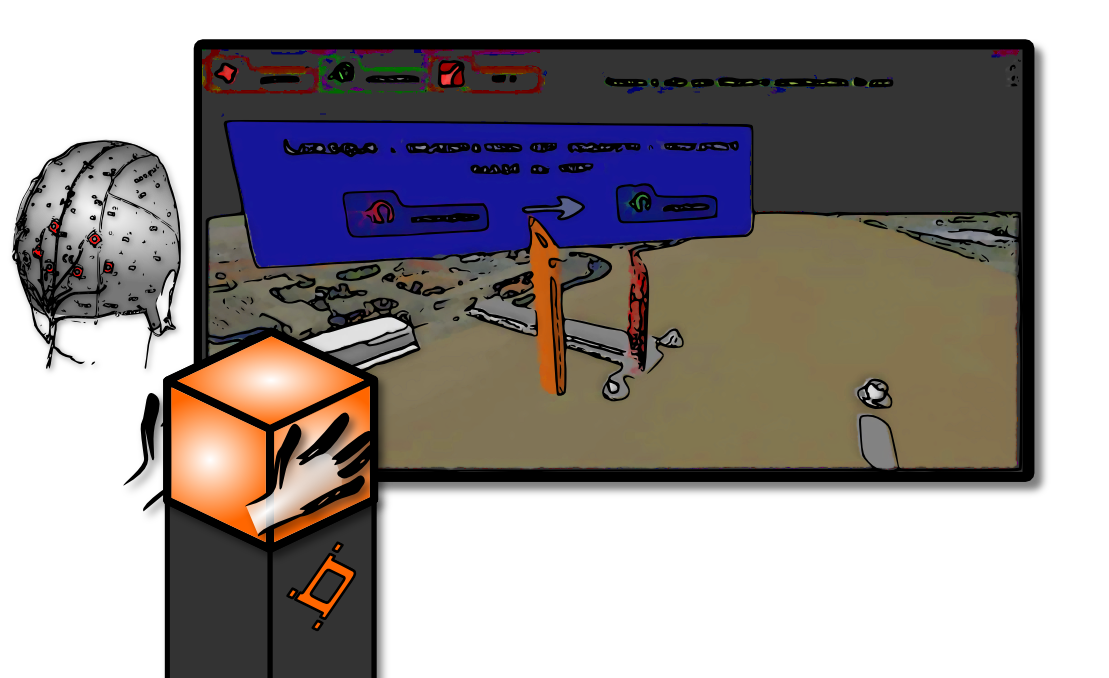Section: New Results
Electroencephalography-based evaluation of user experience
Participants : Jérémy Frey, Maxime Daniel, Dennis Wobrock, Julien Castet, Martin Hachet, Fabien Lotte.
Designing user interfaces requires adequate evaluation tools to ensure good usability and user experience. While many evaluation tools are already available and widely used, existing approaches generally cannot provide continuous and objective measures of usability qualities during interaction without interrupting the user. On the other hand, the measure of brain activity by the mean of electroencephalography (EEG) is mature enough to assess mental states. Combined with existing methods, such tool can be used to strengthen the understanding of user experience.
|
In [35] we studied 3D object manipulation tasks. We showed how mental workload can be estimated from EEG, and then measured it on 8 participants during an actual 3D object manipulation task with an input device known as the CubTile (see figure 11 ). These first results suggested that we could continuously assess the 3DUI and/or interaction technique ease-of-use.
|
We pushed further these finding in a second study [26] , where we have developed a set of methods to continuously estimate the user's mental workload, attention level and recognition of interaction errors during different interaction tasks. We validated these measures in a controlled virtual environment and showed how they can be used to compare different interaction techniques – for instance a keyboard and a touch-based interface (see Figure 12 ).
Thanks to such framework, EEG becomes a useful addition to the repertoire of available evaluation tools, enabling a finer grain assessment of the ergonomic qualities of computer systems.




